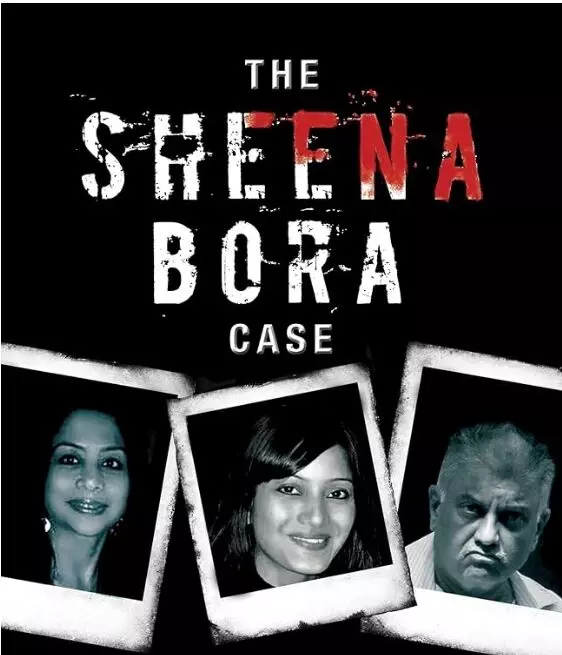The Sheena Bora Case: Challenges in crafting debut book on sensational murder case
Many such interesting instances, narrated by lawyers, some senior journalists, and other contacts made to the book
By Manish Pachouly
Mumbai: The brutal murder case of Sheena Bora has again become a talking point after Netflix released a documentary on the subject.
Moments after the Bombay High Court dismissed the Central Bureau of Investigation’s plea seeking a stay on the docuseries, Netflix released ‘The Indrani Mukerjea Story: Buried Truth’ on February 29.
Being in the news for the last few days since the CBI moved the court seeking a stay, the four-part docuseries got a good opening. As the author of the book, ‘The Sheena Bora Case’, the rights to which were taken by Uraaz Bahl, the director of the docuseries, I too was anxiously waiting for the court order on CBI’s plea.
Contentious media literature
I started the process of writing the book on the subject in late 2016 after I was approached by a Delhi-based senior journalist Shantanu Guha Ray. Till that time, I didn’t know him and he was looking for someone in Mumbai to write a book on the case after a publishing house sought his help.
A few meetings later with a representative of the publishing house in Mumbai, their main office situated abroad got apprehensive as the case was sub judice. They decided not to publish the book at that stage.
Ray then approached Roli Books, a prominent publishing house based in New Delhi and they agreed to publish the book. Once the contract was signed, my research for the book began.
Tracking evidence in chargesheets
Writing my first book on such an important and sensitive subject was not an easy task. The first and most important process was to get hold of the chargesheets, main as well as supplementary. This is important because a chargesheet contains the investigation details minutely. What is important is to study the chargesheet carefully and patiently.
In media, in a case like this, which makes headlines every day, many journalists barely have time to go through the entire chargesheet minutely. I too, as a journalist earlier, had concentrated on the main part of the chargesheets. And the journalists can’t be blamed for this because they work on tight deadlines.
However, when you write a book, you can’t ignore any fact, even unintentionally. You have to merge yourself in the documents to get as many details as you can. And the author is to be blamed for missing facts because he or she has enough time to work on the book.
What helped me were the detailed annexures in the chargesheets, which also included many emails and letters from the family members. Reading such details gives you a broad idea about the tone of the book and how it will shape up.
Revealing conversations
Nonetheless, it was not only the details in the chargesheets but a lot of other research matters for the book. So, talking to people who either knew Indrani and Peter Mukerjea or had interacted with them, was important.
One such conversation became the opening chapter of my book. A former colleague of mine told me how she had a chance meeting with Indrani in April 2015, four months before her arrest. They were flying from Delhi to Mumbai and Indrani’s seat was next to her.
The sequence was interesting. My former colleague initially could not recognise her but had a hunch that she had seen her somewhere. She struck up a conversation with her and was surprised to know that she was Indrani.
It surprised her because a media tycoon was flying in the economy class. They chatted and on reaching Mumbai, they promised each other to catch up again. A few months later in August, the former colleague was shocked to see the news of her arrest on charges of murdering her daughter Sheena.
Many such interesting instances, narrated by lawyers, some senior journalists, and other contacts made to the book. Among these included Indrani’s prison life, how from the initial hard and traumatic experiences, she became an important person among the inmates.
From book to docuseries
Another compelling story was narrated by Ganesh Dhene who had first found Sheena’s remains in Pen taluka of Raigad district in 2012. However, the local cops could not identify the dead person then and the Mumbai police again took Dhene’s help to locate the remains in 2015 when the murder came to light.
This being my first book, I will always cherish the memories of how I worked on it and how incredible the feeling was to write on a subject that had shaken the entire nation.
Then came the day which most authors look forward to. I was approached by Uraaz Bahl and his wife Shaana Levy, through Twitter (now X) in March 2019. They both are the directors of the docuseries.
They showed interest in purchasing the rights and following a few discussions, the rights were sold. They worked further on the subject to make this documentary, however, for me, the important part was that the director purchased the rights to the book and I also helped in providing the copy of the chargesheets.
The documentary is out now and it should be watched without forming any perception or opinion.